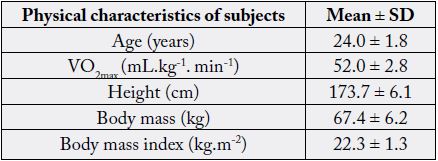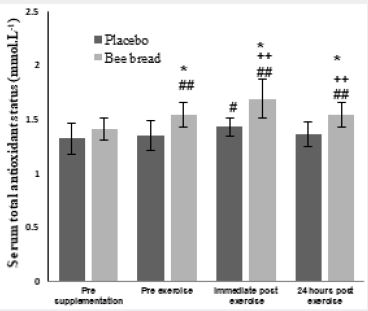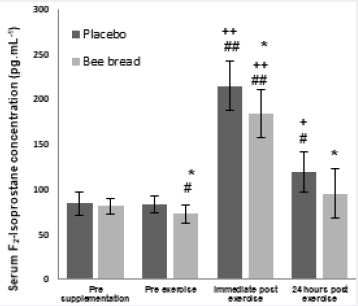Biography
Interests
Chee Ping Wong1*, Chee Keong Chen2, Foong Kiew Ooi2 & Mahaneem Mohamed3
1Faculty of Food Science and Nutrition, Universiti Malaysia Sabah, Kota Kinabalu, Sabah, Malaysia
2Exercise and Sports Science Programme, School of Health Sciences, Universiti Sains Malaysia, Kelantan, Malaysia
3Department of Physiology, School of Medical Sciences, Universiti Sains Malaysia, Kelantan, Malaysia
*Correspondence to: Dr. Chee Ping Wong, Faculty of Food Science and Nutrition, Universiti Malaysia Sabah, Kota Kinabalu, Sabah, Malaysia.
Copyright © 2020 Dr. Chee Ping Wong, et al. This is an open access article distributed under the Creative Commons Attribution License, which permits unrestricted use, distribution, and reproduction in any medium, provided the original work is properly cited.
Abstract
Antioxidant is a substance that helps to reduce the severity of oxidative stress. Many chronic diseases have been reported related the increasing of free radical and oxidative stress in the human. There is still scanty information on antioxidant property of bee bread at pre and post exercise after short term supplementation. This present study investigated effects of eight weeks supplementation of bee bread on antioxidant status at pre and post exercise among athletes. Twelve male athletes were recruited in this randomised crossover study. For the exercise trial test, subjects were required to run at 60% of their respective VO2max on a motorised treadmill for 90 minutes and immediately followed by a time trial performance. Blood samples were collected at pre and post exercise to determine total antioxidant status (TAS) and F2-Isoprostane. Statistical analyses were performed using descriptive statistic and ANOVA with repeated measures. TAS was significantly higher, whereas F2-Isoprostane was significantly lower in the bee bread trial in comparison with placebo trial after eight weeks of supplementation. This present study found that bee bread supplementation showed positives impact on antioxidant status among athletes.
Introduction
Numerous studies reported that oxidative stress are the major causes of cardiovascular diseases [1-2], cancer
[3-4], impaired wound healing [5-6], cataracts [7] and gastrointestinal disorders [8-9]. Reactive oxygen
species (ROS) and reactive nitrogen species (RNS) such as hydroxyl radical, superoxide, hydrogen peroxide,
nitric oxide and peroxynitrite can damage lipids, proteins and DNA in cells [10]. Reactive oxygen species and
reactive nitrogen species are also related to the muscle damage, fatigue and decrease exercise performance.
Free radicals will increase with increased intensity of exercise and raised body temperature during exercise.
Exercise is postulated to generate free radicals by the production of lactic acid that can convert a weakly
damaging free radical (superoxide) into a strongly damaging free radical (hydroxyl) and due to inflammatory
responses to muscle damage [11-12]. Antioxidants will scavenge the free radical from damaging the cell and
reduce oxidative stress.
Bee products have been used thousands of years ago as a healthy supplement in the traditional medicine. Several studies indicated bee products are antioxidant agent [13-15], anti-inflammatory agent [16], antitumor agent [17] and antimicrobial agent [18]. Natural antioxidants can be phenolic, flavonoid and nitrogen compounds such as alkaloids, chlorophyll derivatives, amino acids and amines [19-20]. Bee product contains antioxidant components such as vitamins C and E [21], flavonoid [22] and phenolic compounds [23]. There were several studies reported ergogenic effects of bee products on sports performance [24-26] and may elicit beneficial effects on bone properties [27]. However, there is still scanty information related to the bee products on antioxidant properties at pre and post exercise after short term supplementation. This present study investigated effects of eight weeks supplementation of bee bread on antioxidant properties at pre and post exercise among athletes.
Methodology
Twelve male athletes were recruited in this study. Subjects consumed 20g of bee bread or placebo for 8
weeks. Before exercise trial test, subjects were asked to refrain from exercise for 24 hours before the exercise
tests to ensure that they have adequate rest. Their food diary and physical activity diary for the last 72 hours
were also collected. Subjects recorded their 3 days food diary prior to the first running trial and repeated
the same diet over 3 days before the days of consecutive test to minimize the differences in muscle glycogen
between the trials.
Upon arrival at the laboratory, subject’s nude body weight (after emptying their bladder) and height were measured. An indwelling cannula was inserted into a subcutaneous forearm vein and an extension tube was connected to it to facilitate repeated blood withdrawals. Patency of the cannula was maintained with heparinised saline (Pfizer, Australia). During each blood collection, the first 1mL of the blood sample was discarded and this amount was not included in the blood analysis as it was diluted by the heparinised saline. Eight mL of blood was collected in another 10mL sterile syringe. Approximately 1mL of heparinised saline was injected into the extension tube after each blood withdrawal. A standardised breakfast with 500mL of plain water was consumed by the participants who remained in comfortable sitting posture for 30 minutes. These procedures were standardised for all the subjects. During the exercise trial test, subject was asked to warm up for 5 minutes by running at 50% of their VO2max. Then, the intensity of running was increased to 60% of their respective VO2max during the 90 minutes running trial and followed by a time trial.
Blood samples were taken at pre supplementation, pre exercise, immediate post exercise and 24 hours post exercise to determine total antioxidant status and F2-Isoprostane. All the statistical analyses were computed by using the Statistical Programme for the Social Sciences (SPSS) version 26.0 (SPSS Incorp, United States). The level of significance for all analysis was set at p<0.05. All the collected data were expressed in mean and standard deviation (mean±SD). ANOVA with repeated measures was used to determine the differences of the measured total antioxidant status and F2-Isoprostane parameters over time and between trials. Bonferroni adjustment for multiple comparisons was used to locate the differences when repeated measures analysis of variance revealed a significant main effect of time.
Results and Discussion
Twelve male athletes were recruited in this study. The mean maximum oxygen consumption (VO2max)
reflected that the subjects had good cardio-respiratory fitness. Mean body mass index of the subjects was
categorised as normal and healthy (Table 1).

Figure 1 showed mean values of total antioxidant status in two different trials. Total antioxidant status increased significantly after 8 weeks supplementation in the bee bread trial but not in the placebo trial (p<0.01). Total antioxidant status was significantly higher at pre exercise, immediate post exercise and 24 hours post exercise in bee bread trial compared to the placebo trial (p<0.05). Total antioxidant status was significantly higher at pre exercise, immediate post exercise and 24 hours post exercise compared to the pre supplementation value in the bee bread trial (p<0.01).

* denotes significant difference from corresponding value of
placebo trial at p<0.05
#, ## denotes significant difference from respective pre
supplementation values at p<0.05 and p<0.01 respectively.
++ denotes significant difference from respective pre
exercise values p<0.01.

* denotes significant difference from corresponding value of
placebo trial at p<0.05.
#, ## denotes significant difference from respective pre
supplementation values at p<0.05 and p<0.01 respectively.
+, ++ denotes significant difference from respective pre
exercise values at p<0.05 and p<0.01 respectively.
Figure 2 showed mean values of F2-Isoprostane in two different trials. F2-Isoprostane decreased significantly after 8 weeks supplementation in the bee bread trial but not in the placebo trial (p<0.05). F2-Isoprostane concentration was significantly lower at pre exercise, immediate post exercise and 24 hours post exercise in bee bread trial compared to placebo trial (p<0.05). F2-Isoprostane concentration was significantly higher at immediate post exercise compared to the respective pre exercise values in both trials (p<0.01).
Total antioxidant status increased significantly at immediate post exercise compared to the resting value in both of the trials. Increased antioxidant status during exercise is due to increased activities of antioxidant enzymes response of prolonged exercise. It is assumed that exercise may increase antioxidant defence and the magnitude increased of antioxidant defence is dependent on the antioxidant status of the athletes. Total antioxidant status concentration was significantly higher in the bee bread trial in comparison with placebo trial at immediate post exercise. This present findings indicated that eight weeks supplementation of bee bread was able to increase antioxidant status compared to the placebo. It is speculated that higher total antioxidant status in the bee bread trial compared to the placebo trial during exercise may have scavenged the free radicals and may beneficial to the exercise performance. Free radicals such as reactive oxygen species may limit the exercise performance because they are causing damage to the nucleic acids cell and promote muscular soreness and fatigue.
F2-Isoprostane is a prostaglandin-like compound formed from the free radical catalysed peroxidation of arachidonic acid [36]. Quantification of F2-isoprostanes has proven to be an important indicator to measure free radicals and to assess oxidative stress [37-38]. A lower of F2-Isoprostane in the bee bread trial reflects that there was less oxidative damage compared to the placebo trial due to antioxidant properties of bee bread. F2-Isoprostane increased significantly at immediate post exercise compared to the resting value in both of the trials. This finding was similar with the previous studies also reported that F2-Isoprostane increased significantly after exercise [39-40]. It is speculated that F2-Isoprostane increased during exercise due to the oxygen flux increased to the exercising skeletal muscle [41]. Exercise increases the oxygen uptake 10 to 20 fold and promotes generation of reactive oxygen species [42]. This present finding found F2-Isoprostane in the bee bread trial was lower compared to the placebo trial at immediate and 24-hour post exercise. This observation reflected that bee bread supplementation reduced oxidative stress productions during exercise compared to the placebo and a lower oxidative stress means less damage to biological macromolecules especially deoxyribonucleic acid, polyunsaturated fatty acids, amino acids and active proteins of the skeletal muscle cells [41]. This finding indicated oxidative stress was significantly reduced at rest and exercise in the bee bread trial compared to the placebo trial. This reduction in oxidative stress could have contributed to a better exercise performance due to the speculated less oxidative damage to the muscle cells. This present finding found that eight weeks supplementation of bee bread was able to increase total antioxidant status and decrease F2-Isoprostane at pre and post exercise among athletes.
Conclusion
Supplementation of bee bread showed positives impact on antioxidant status among athletes.
Bibliography

Hi!
We're here to answer your questions!
Send us a message via Whatsapp, and we'll reply the moment we're available!